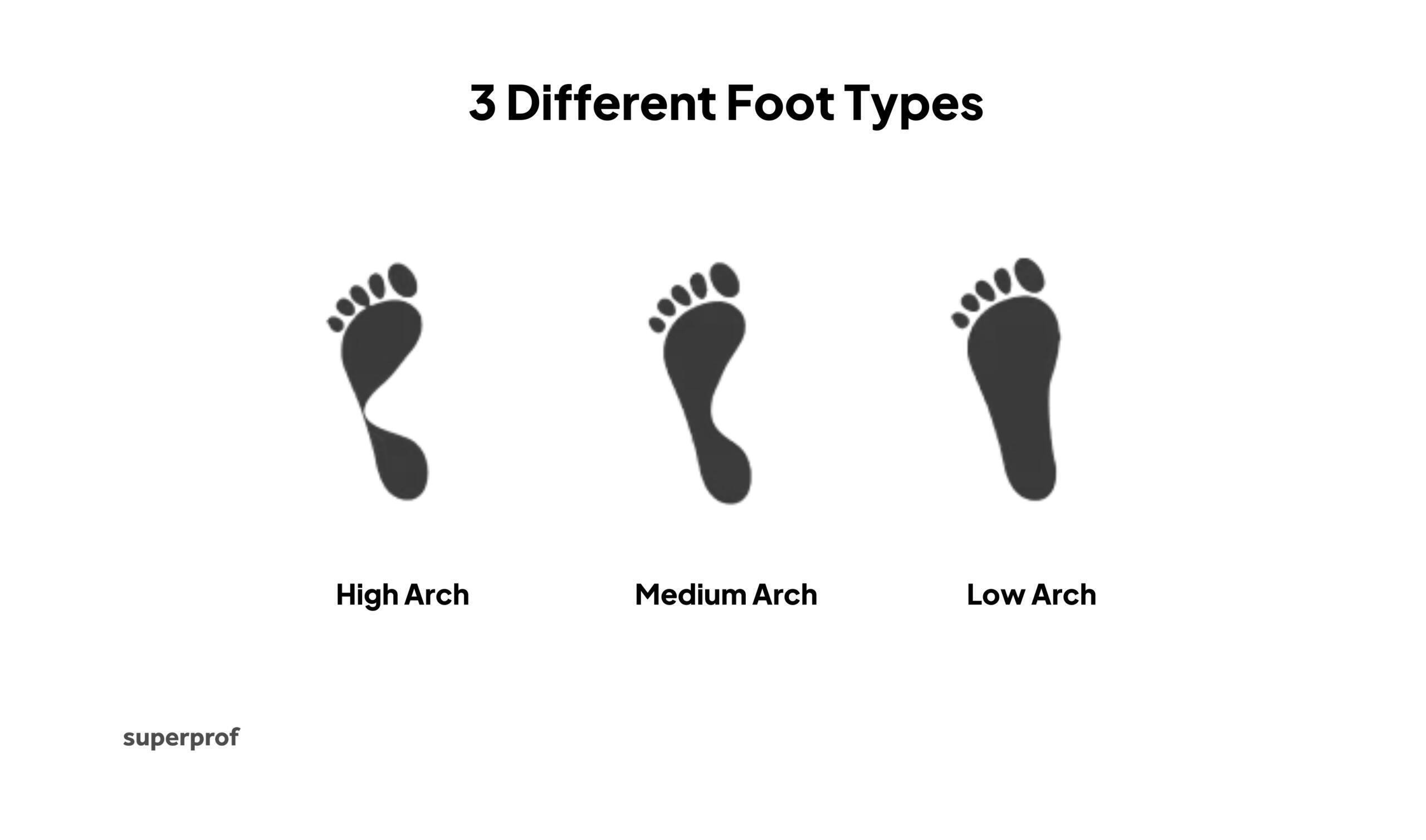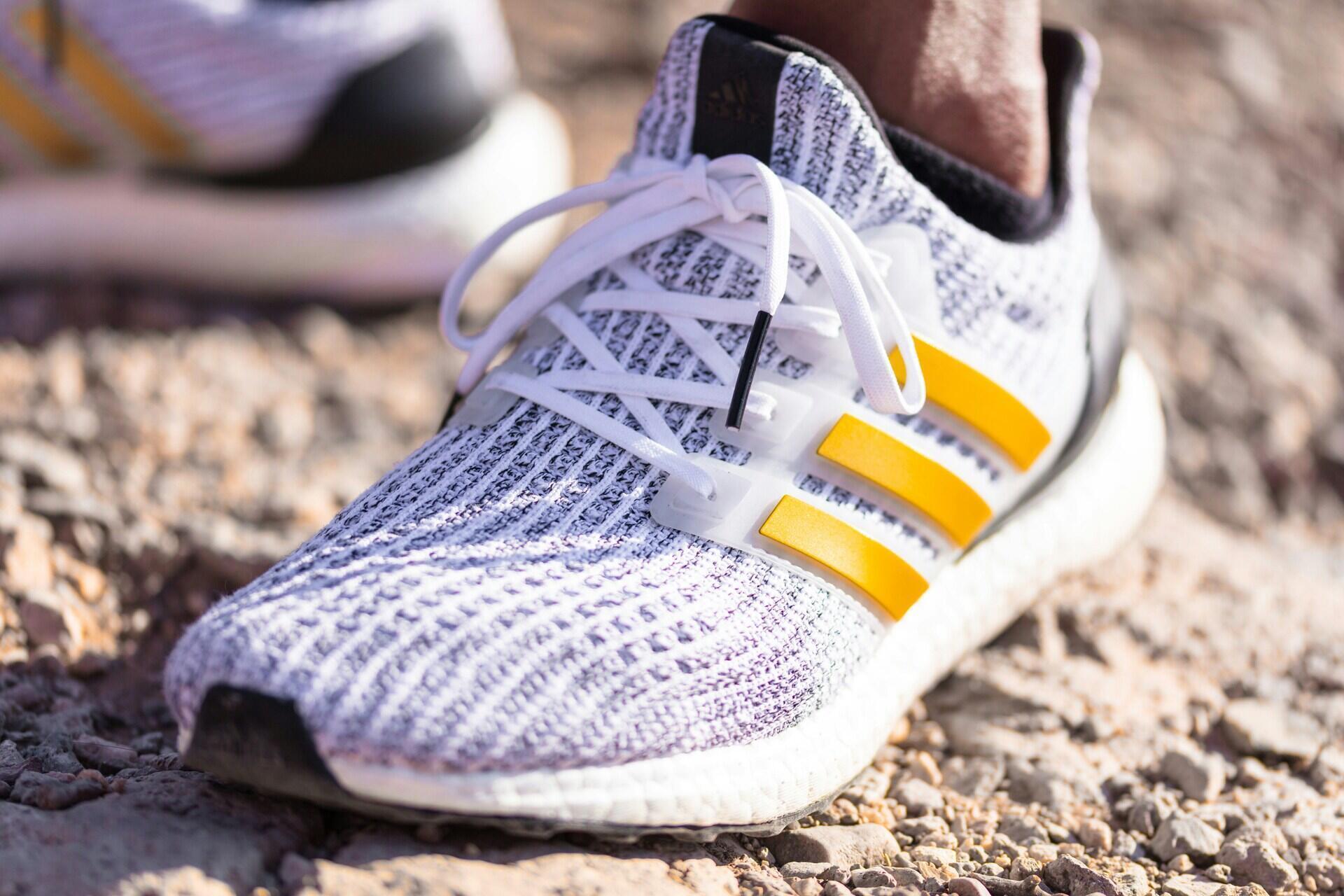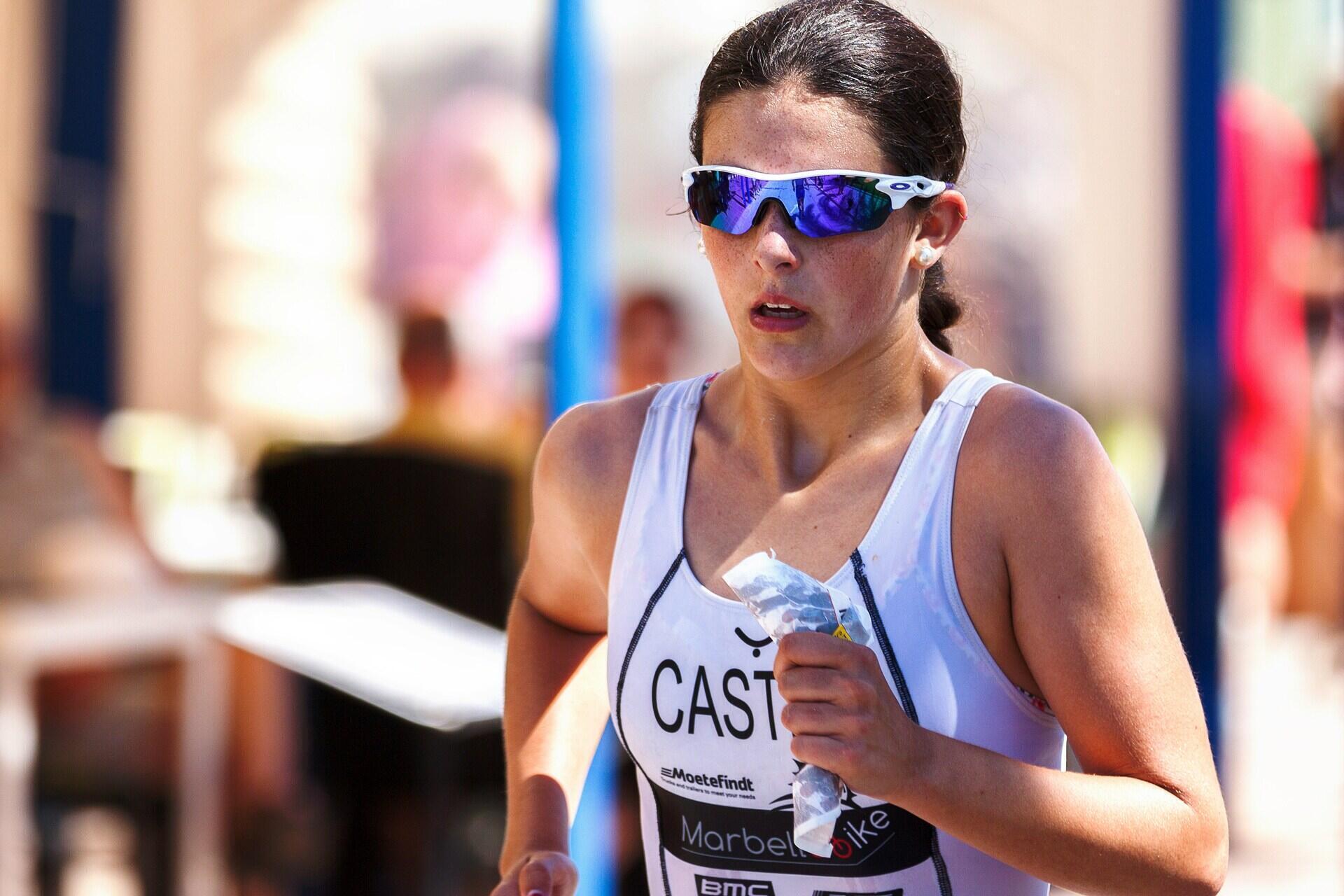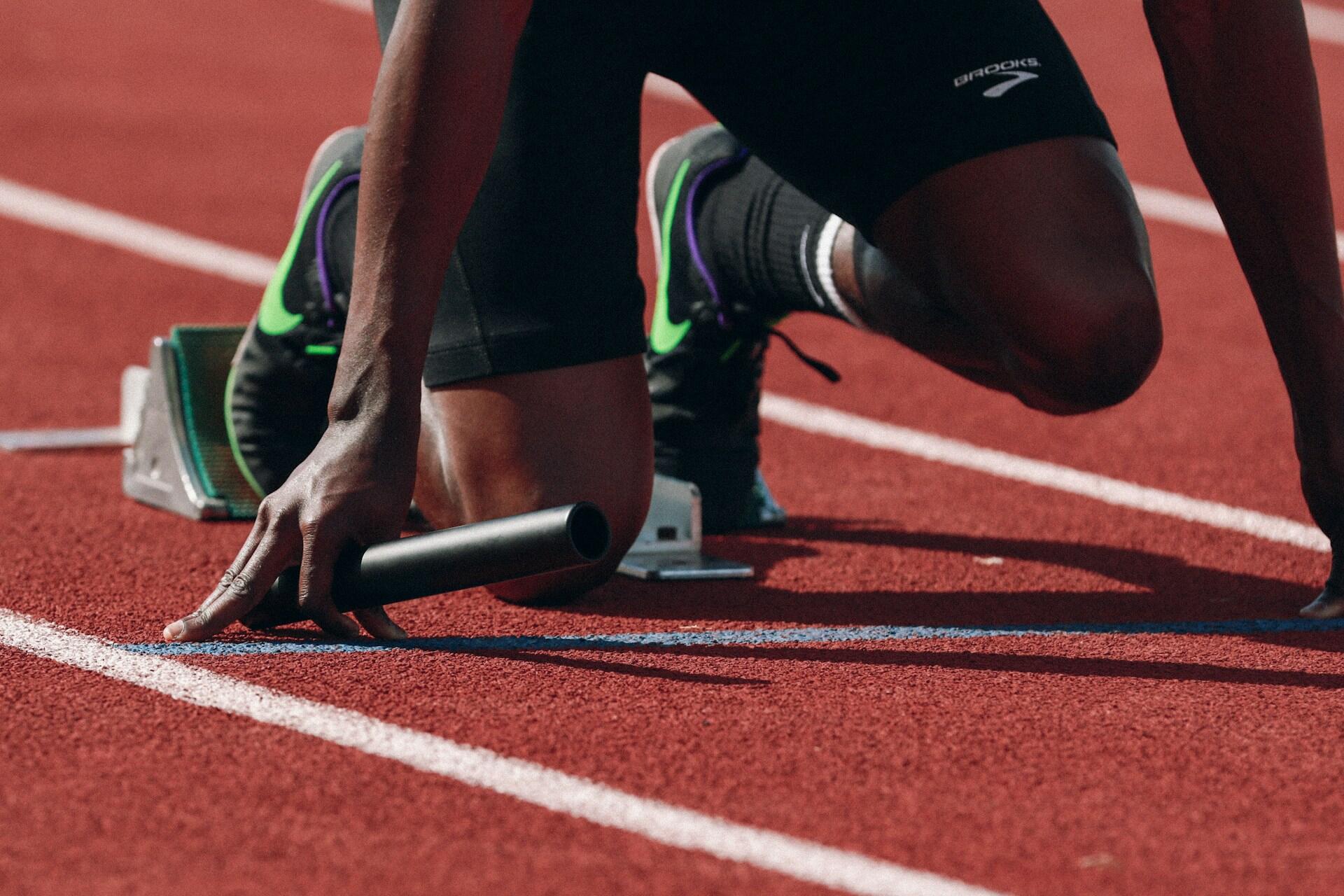Running is arguably the most accessible sport of them all. Most people, regardless of age, gender, ethnicity or social class, already have what it takes to start a running routine - no need for a gym subscription or a club membership. When it comes to equipment, the barrier to entry is as low as it gets: at worst, there's no need for any special equipment, since what you already have at home is probably good enough.
However, if you want to take your running sessions to the next level and improve your performance while also preventing injuries and increasing comfort, adequate sports equipment is something you can and should invest on!
Depending on your budget, the options are limitless:
- 👟 Running Shoes – Good running shoes provide support, cushioning, and help prevent injuries like ankle, knee and back pain.
- 👕 Sports Clothing – Helps regulate body temperature and reduces skin irritation by keeping sweat away from your skin.
- 🧦 Running Socks – Prevent blisters and provide additional arch support for your feet.
- 🧋 Hydration Gear – Water bottles and hydration vests or belts help prevent dehydration, and are essential for long runs.
- 🙋🏽♀️ Sports Bra – A properly fitting sports bra can significantly reduce breast discomfort, especially for high-impact exercises such as running.
- 🕶️ Sports Sunglasses – Act as a reflective screen against UV rays, and as a protection against insects, dust, etc.
🎽 Running Belt/Armband – Holds essentials like keys, phone or wallet, keeping them from bouncing around.
🔦 Headlamp/Reflective wear – If running at night / in low light, these keep you visible and safe.
🩸 Compression Gear – Compression socks or sleeves can help with circulation and muscle recovery.
⏱️ Timer - This basic piece of gear is essential to measure your performance and guide your training sessions.
⌚️ Running watch/tracker - Tracks your pace, distance, and heart rate to help monitor progress and optimise training.
🎧 Headphones – A pair of wireless earbuds can be useful to get instructions from your fitness app or to listen to your favourite playlist.
❤️🩹 Foam Roller – Useful for post-run recovery, reducing muscle soreness and improving flexibility.
Obviously, not all of these are mandatory, and the need for them depends on your preferences, goals, level and, of course, budget. That being said, a good pair of running shoes is definitely the most essential piece of equipment you can get. If you want to know your running level, check out our quiz.

Running Shoes: How to Make the Right Choice for You?
Let's face it, going to a sports store to buy a pair of running shoes can be an overwhelming task: there are often way too many options to chose from, and those willing to help you might be more interested in selling you the most expensive shoes than getting you the pair that fits you the best. Nevertheless, if you're going to spend your time and well-earned money on it, you might as well do your best to make the right choice. There are 3 main criteria that you can focus on that will help you find the best shoes for you: foot type, running style and the type of terrain you want to run on.
First of all, you should be able to determine your foot type, particularly the arch. To do so, you just need to do the wet foot test. Simply wet both of your feet and stand on a piece of paper for about 10 seconds. After you step off the paper, you will be able to determine your foot type by observing the imprints. Compare them with the image below:

If you have a high arch (under-pronation), cushioned shoes with extra flexibility and shock absorption might be the best for you. On the contrary, if you have low arch/flat feet (over-pronation), you should probably choose stability or motion-control shoes that provide extra support. And if you have a medium/neutral arch, you're in luck: most neutral or cushioned shoes will be comfortable enough for your feet.
Another important aspect is your running style. Our feet hit the ground at different points of the foot and at different angles. For that reason, you should try to understand your running style by checking the insoles of your current running shoes or by having someone film you while you run on a treadmill, for example.
Heel Strikers: If your foot lands on the heel first, then the weight progresses to the front of the foot, you probably need more cushioning at the heel.
Midfoot Strikers: If the ball of the foot is the first contact point and upon landing the foot is almost parallel to the ground, you should look for balanced or neutral cushioning.
Forefoot Strikers: If you land on your forefoot, toes, or the outside of your feet, and if the heel barely has contact with the ground, you might want to consider shoes with extra forefoot padding.
Last but not least, consider the conditions and the terrain you want to run on. If all you want to do is treadmill running, a pair of entry-level lightweight shoes will probably do just fine. In case you're ready to venture out on the street for some road running, lightweight but cushioned shoes with good breathability are a good choice. If you're not afraid to get dirty and want to start trail running, you should look for shoes with an aggressive tread, extra grip, and durability. Lastly, if you would rather start with shorter distances on the track, a good pair of middle-distance spikes with a softer and durable sole through the heel region is the best choice.
Here are our suggestions for different types of running shoes, depending on your foot type, terrain and budget:
[table “us_101310” not found /]Regardless of which shoe you choose, you have to make sure it perfectly fits your size: this sounds obvious, but many people end up with shoes that are either too tight or too big for them. There should be about a thumb’s width of space between your longest toe and the front of the shoe. The shoe should be snug but not tight in the midfoot and heel. Don't be afraid to try out the shoes in the store and even walk or run in them to ensure comfort (even better if you have your typical running socks when trying them on).

Besides a good pair of shoes, in case you want to boost your performance during races, improving your nutrition can be a good way to start.
Clothing: Upgrade From Your Old T-Shirts
If you're on a budget or if you find regular shorts or t-shirts comfortable enough, they can be perfectly fine for running. But in case you want to optimize your running experience and perform at your best under different weather conditions, there are pieces of clothing specially made for running that you can invest on.
When running, our body temperature can rise above 104°F. Therefore, whether it's t-shirts, jackets, shorts or tights, you should look for lightweight, seamless and breathable materials. Technical fabrics like polyester, nylon or merino wool are better at keeping the sweat away, while traditional fabrics like cotton or linen might not be the best choice. In colder temperatures, opting for layers (onion-style!) allows you to adjust your outfit as the temperature changes. For women, a well-fitting sports bra prevents discomfort and offers support.
When it comes to your feet, one thing that often gets overlooked is a good pair of socks. Choosing socks specifically made for running (cushioned, seamless and made with a moisture-wicking fabric) is a game-changer when it comes to comfort, but also helps preventing blisters and overheating.

Accessories: Options for All Tastes
The amount of accessories available for runners is vast. From compression sleeves to headbands or reflective wear, there is a world of options, so let's focus on the essentials.
Staying hydrated is key, especially on long runs. If you don't want to carry a water bottle, having a hydration belt or a vest (best for long runs and trails) can be helpful. If the sun is out, you might want to protect your eyes from it and keep sweat out of your face. In that case, look for lightweight, sweat-wicking caps and UV-protected sunglasses.

Despite having become very trendy in the last few years, compression garments have been around since the 1950s, and first made their way into sports in the 1980s. When it comes to running, compression sleeves, tights and socks promote blood circulation, improving oxygen delivery to the muscles, and reduces swelling, preventing that heavy, sluggish feeling after a run. However, if you're a beginner taking your first steps in the world of running, you shouldn't need to rush to buy this kind of equipment.
If you're running at night, don't forget: safety first! Having a reflective vest or even a headlamp is a good way to prevent accidents. Opting for bright-colored clothing is also a good way to make yourself more visible.
Lastly, if you need to bring your belongings (phone, wallet, keys) with you during your running sessions, having a running belt or at least an armband can be a great solution. And, of course, don't forget a timer to measure your performance!
Technology: For Those Willing to Go the Extra Mile
There's no doubt about it: running technology has come a long way! Today, you can track all kinds of data in real-time (distance, pace, heart rate, elevation, etc) while listening to your favorite playlist with your wireless earbuds and sharing your live location with your running buddies.
Once again, if you're an absolute beginner, there's no need to worry about wrist-based sensors and VO₂ max tracking just yet. But for those training for a marathon or just looking to take their running journey more seriously, here are a few tips on where to start.
Running Watches & fitness trackers
As with running shoes, the same gadget (regardless of how good it is) will probably not suit everyone. Therefore, it's important to understand what features you are looking for, as well as how much you're willing to pay.
Generally, running watches are designed for serious tracking with GPS, advanced metrics, and long battery life, while most fitness trackers are more focused on daily activity, heart rate, and overall health rather than advanced running metrics.
🫁 VO₂ Max & Performance Metrics – Estimates aerobic capacity and training effectiveness.
🐾 GPS Tracking – Measures distance, speed, and route.
❤️ Heart Rate Monitoring – Tracks heart rate directly from the wrist sensors or via a chest strap.
🧭 Navigation & Mapping – Great for trail runners (breadcrumb trails, turn-by-turn directions).
🪫 Battery Life – Can range from a full day (Apple Watch) to up to two weeks (Garmin Enduro).
🚶🏽♀️➡️ Step Counting & Daily Activity Tracking – Encourages movement throughout the day.
🛌 Heart Rate & Sleep Tracking – Monitors resting heart rate and sleep quality.
📍 Basic GPS – Most require your phone for GPS tracking.
🥵 Stress & Recovery Monitoring – Provides features like heart rate variability tracking (Oura, Whoop, Garmin, etc).
🔋 Long Battery Life – Most last 5 to 10 days per charge.
At the end of the day, the need for a running watch or a fitness tracker comes down to how much you're willing to invest in your training sessions. Furthermore, some runners prefer the simplicity of running without gadgets, while others thrive with technology and digital tools.
Conclusion
Despite being an accessible sports activity that doesn't require lots of equipment, today there are plenty of options to make your running sessions more interesting, reduce the risk of injury or improve your performance.
The truth is, as the initial motivation kicks in, it might be tempting to go out there and buy loads of running gear that could end up being unnecessary for a beginner. What we recommend is to start by buying a good pair of running shoes and then think of investing in other types of equipment as you make progress in your running journey. As soon as your routine gets consistent and you start rounding out your goals, the need for specific gear will come naturally. When that time comes, you'll have a better sense of what exactly you need to improve!
Your Personal training tutor is waiting for you on Superprof!
Want to give it a try?
Let our experts impress you!

















